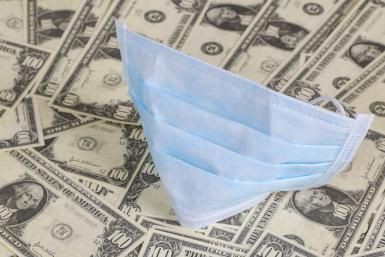How to Calculate PPP Payroll Costs Under The New 24-Week Limit

It only took them a couple of weeks, but the SBA just released further guidance in an attempt to clarify payroll expenses under the PPP Flexibility Act (PPPFA) enacted on June 5, 2020. The PPPFA allows for the extension of the Covered Period for loans in place prior to June 5, 2020 from eight weeks to 24 weeks. This Covered Period is the window during which a business tracks approved expenses for forgiveness. Loans effective June 5, 2020 and following will automatically fall under the 24-week time frame. Additionally, the SBA has released an updated loan forgiveness application and an abridged EZ forgiveness application.
24-Week Cap for Employees
The per-employee maximum forgivable amount had long been established as $15,385, calculated based on eight weeks of payroll of an annualized $100,000 salary (8/52 x $100,000). You may recall that this $100,000 salary limit also includes employees who reach the threshold only because of bonuses or hazard pay. This rule did not change. However, the PPPFA extended the payroll that can be counted toward forgiveness to a 24-week maximum, or $46,154 (24/52 x $100,000). This expansion should make it significantly easier for businesses to obtain full loan forgiveness, especially when the new safe harbor exemptions are taken into consideration.
24-Week Cap for Owner Compensation
There's good news and bad news on owner compensation.
Unfortunately, the expanded 24-week maximum wages noted above cannot be used for owner compensation. However, the threshold was increased to $20,833 over a 24-week period (that's something, at least). This amount is calculated based on 2.5 months of an annualized $100,000 salary (2.5/12 x $100,000). The theory is that the amount mirrors the maximum amount that an owner making $100,000 or more requested during the application process.
This lower limit has been enacted to ensure that owners with only a couple of employees don't receive an unintended windfall while also maintaining the integrity of the CARES Act, which was designed to keep employees on payroll. The new guidance provides an example of a borrower with one employee who receives a maximum loan equal to 2.5 months of payroll per person. If the borrower should lay off the employee while availing himself of a safe harbor, he could request full loan forgiveness while still receiving five months of payroll costs.
A sole proprietor with no employees will not encounter this scenario, as the maximum loan they could have received was 2.5 times their 2019 net profit, up to $100,000 of income, or $20,833. Thus, their loan amount and loan forgiveness will be the same. This is a nice break for sole proprietors, and should allow them to file the EZ application with minimal effort.
What Is An Owner Employee?
An official definition of the new term "owner-employees" is still necessary, though some clarity can be gleaned from the updated loan forgiveness application. There is some confusion as to whether the term owner-employee includes both S corporation and C corporation owners. It does appear at this time that both types of corporation owner-employees will be included in the definition. This is further bad news, as they will now face some of the same payroll limitations on Partners and Schedule C filers in the forgiveness calculations. These owner-employees will not be allowed to include health insurance costs as part of payroll, and they will be limited to the maximum loan forgiveness amount to $20,833, as noted above, for purposes of the forgiveness calculations.
Peter N. Riefstahl is a supervisor at Louis T. Roth & Co., PLLC, a Louisville, KY-based Certified Public Accounting firm that specializes in tax planning, accounting, and business consulting services.
© Copyright IBTimes 2025. All rights reserved.





















